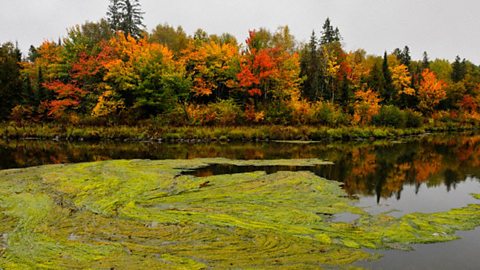Artificial fertilisers
Artificial fertilisers are manufactured from petrol or natural gas. They can contain a wide variety of nutrients including nitrates, magnesium, phosphorous and potassium. Fertilisers that contain nitrogen, phosphorous and potassium are called NPK fertilisers.
Artificial fertilisers contain a relatively high quantity of nutrients so smaller volumes of them are needed. They are generally less expensive to make than natural fertilisers. Artificial fertilisers can release their nutrients into the soil very quickly.
Artificial fertiliser that has been sprayed on to a field can be leached out - washed out by rain water moving through the soil. If the fertiliser is leached into a loch or river, algae can multiply very rapidly. Normally algae numbers are low due to the low availability of nutrients. The increase that occurs when fertiliser is leached into the water is called an algal bloomA marked increase in the population of algae in the waterways, usually caused by fertiliser runoff from surrounding fields. Turns the water green..

The breakdown of dead algae by decomposing microorganisms can greatly reduce the concentration of oxygen dissolved in the water. This can result in the death of fresh water animals and plants. The fresh water cannot support so much life so the biodiversity decreases.